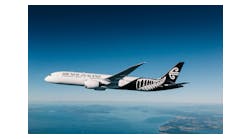July 07--TAMPA -- After Southwest Airlines Flight 3334 from Tampa International Airport landed at Houston's William P. Hobby Airport on a recent Saturday, a flight attendant asked deplaning passengers to cross their seat belts to indicate they enjoyed the flight.
"But if you didn't like the service, remember this is TWA Flight 678," she said.
The tongue-in-cheek reference to the once prominent airline that's been defunct since a 2001 merger highlights a common trend in recent years.
Since American Airlines acquired TWA, Continental and Northwest have joined eight other merged airlines whose names have disappeared through mergers.
AirTran will be fully consolidated into Southwest next year following their 2011 deal, while the latest U.S. merger involves American Airlines and US Airways.
If the government approves that deal creating the largest U.S. airline, four carriers -- American, Delta, United and Southwest -- will account for 85 percent of U.S. air service.
Those airlines and their merger partners also control 84.9 percent of the market share at Tampa International. If conventional wisdom holds, they will trim flights and air fares will increase.
A closer look at Tampa's commercial aviation market, however, indicates its passengers could fare better than those elsewhere as the four major airlines launch a new era of air travel, now that the most likely merger options have been consummated.
"On the surface, any time there is consolidation it appears there will be decreased competition, prices will rise and service will get worse," said Charles Westbrooks, an associate professor at Embry-Riddle Aeronautical University in Daytona Beach and former American Airlines Boeing 727 first officer and flight engineer.
"Still it's different in Florida because of the volume of passengers. I tell my students if you are starting an airline, you go where you are sure to get passengers. You don't got to Des Moines, you go to Florida."
Tampa International offers nonstop flights to 20 destinations served by competing airlines and another 39 served by a single carrier.
Southwest and AirTran have competed on flights serving Baltimore and Indianapolis, but there is no duplication of routes from Tampa International on American and US Airways.
"What makes us strong is we are an origination and destination market, which means that Southwest, JetBlue, Spirit, United -- all the airlines are carrying passengers who want to begin and end their travels in Tampa," said Chris Minner, the airport's vice president of marketing.
"The fact that Tampa does not rely on connecting passenger traffic means that our market is more stable even in the face of fluctuating airline strategies."
Minner said the merger of AirTran and Southwest strengthens Southwest's presence at Tampa International.
"That's evidenced by the fact that they just added Memphis, the first new destination from Tampa in more than two years," he said.
"Also their seat capacity will be up 1 percent in January compared with last January, while most other Florida airports are seeing a decline in capacity."
Tampa International ranks fourth in passenger traffic in Florida, behind Orlando, Fort Lauderdale and Miami.
The airport reported a 2.8 percent gain in passengers in May compared with a year ago to 1.45 million, 1.41 million of them domestic passengers. Traffic through the first five months of the year is up 2.6 percent to 7.46 million.
Air fares at Tampa International characteristically are among the lowest in the nation, adjusted for mileage.
The most recent U.S. Department of Transportation data showed Tampa's average round-trip domestic air fares for the fourth quarter of 2012 at $309.37, compared with a national average of $374.24.
Airport officials attribute that to a healthy mix of legacy carriers, which flew before airline deregulation in 1979, and low-cost carriers created after the U.S. government no longer set air fares.
Today's fares are significantly lower than the dawn of the jet age. For example, a one-way coach seat on Eastern or National Airlines between Tampa and New York cost $51.40 in January 1960.
Adjusted for inflation that amounts to $404.72 today, compared with today's one-way fares between Tampa and New York of about $104, available on AirTran, Delta and JetBlue.
Just how much the pending consolidations will affect air fares remains to be determined.
But it would appear Tampa and other Florida airports -- Fort Lauderdale, Orlando and Fort Myers also rank in the top dozen U.S. cheapest -- would continue to remain a bargain compared with other U.S. airports and other transportation modes. "Do the math," Westbrooks said. "It might cost $500 roundtrip to fly between Florida and Los Angeles, but there is no way you can drive for $500 roundtrip, not including the lost time."
Westbrooks maintains airlines need to generate enough profit to stabilize their industry and attract investors, in particular to replace aging, fuel-thirsty fleets that were bought in large numbers decades ago.
In addition to raising air fares, which rose 4.2 percent between 2007 and 2012 to $375, the airline industry has generated billions of dollars in ancillary fees, including $3.5 billion in 2012 to check bags and $2.6 billion to change reservations.
That has helped transform an industry smeared with red ink, particularly after the 9/11 attacks and increasing jet fuel prices, into one in which surviving carriers have gained confidence, despite pretax profits of about 1 percent in the past three years, the Air Line Pilots Association in Washington reported.
The Government Accountability Office's latest in a series of reports on airline mergers discussed the proposed American and US Airways deal in a study released June 19.
The report focused on implications of a dozen airport pairs with overlapping service from the two airlines, stating a key concern for the U.S. Department of Justice in reviewing an airline merger is the loss of a competitor on nonstop routes.
None of those,routes, however, involves Tampa.
"As with any merger of this magnitude, this proposal will be examined by the DOJ to determine if its potential benefits for consumers outweigh the potential negative effects," the GAO report stated.
Last week, attorney generals from at least 19 states, including Florida, were joining the DOJ review, a Reuters report said, but no further details were available.
Tampa International's Minner offered a local perspective.
"If consolidation makes airlines more economically viable, that's good for us because the airlines are looking for new opportunities in strong markets," Minner said.
(813) 259-7817
Copyright 2013 - Tampa Tribune, Fla.




